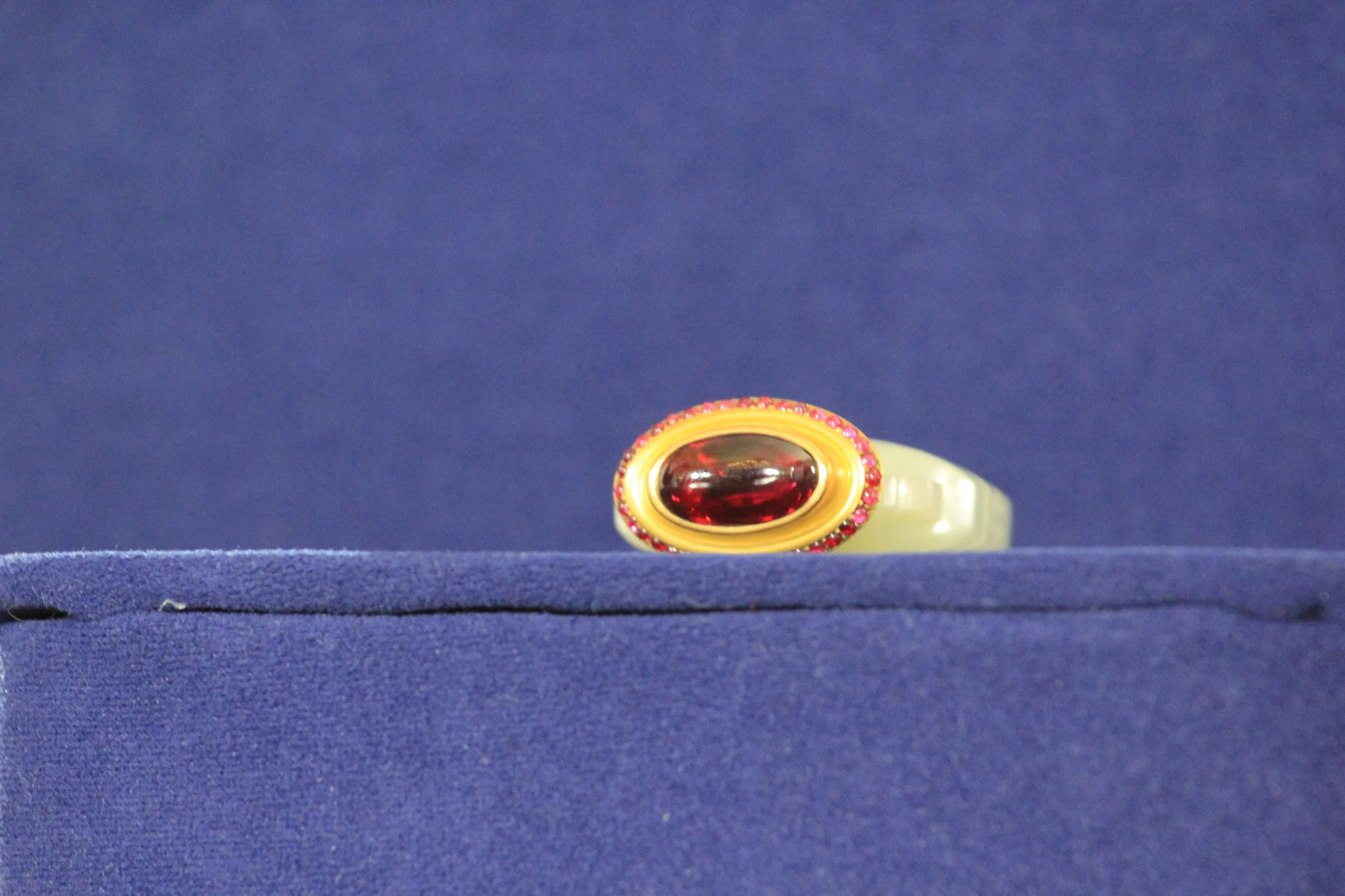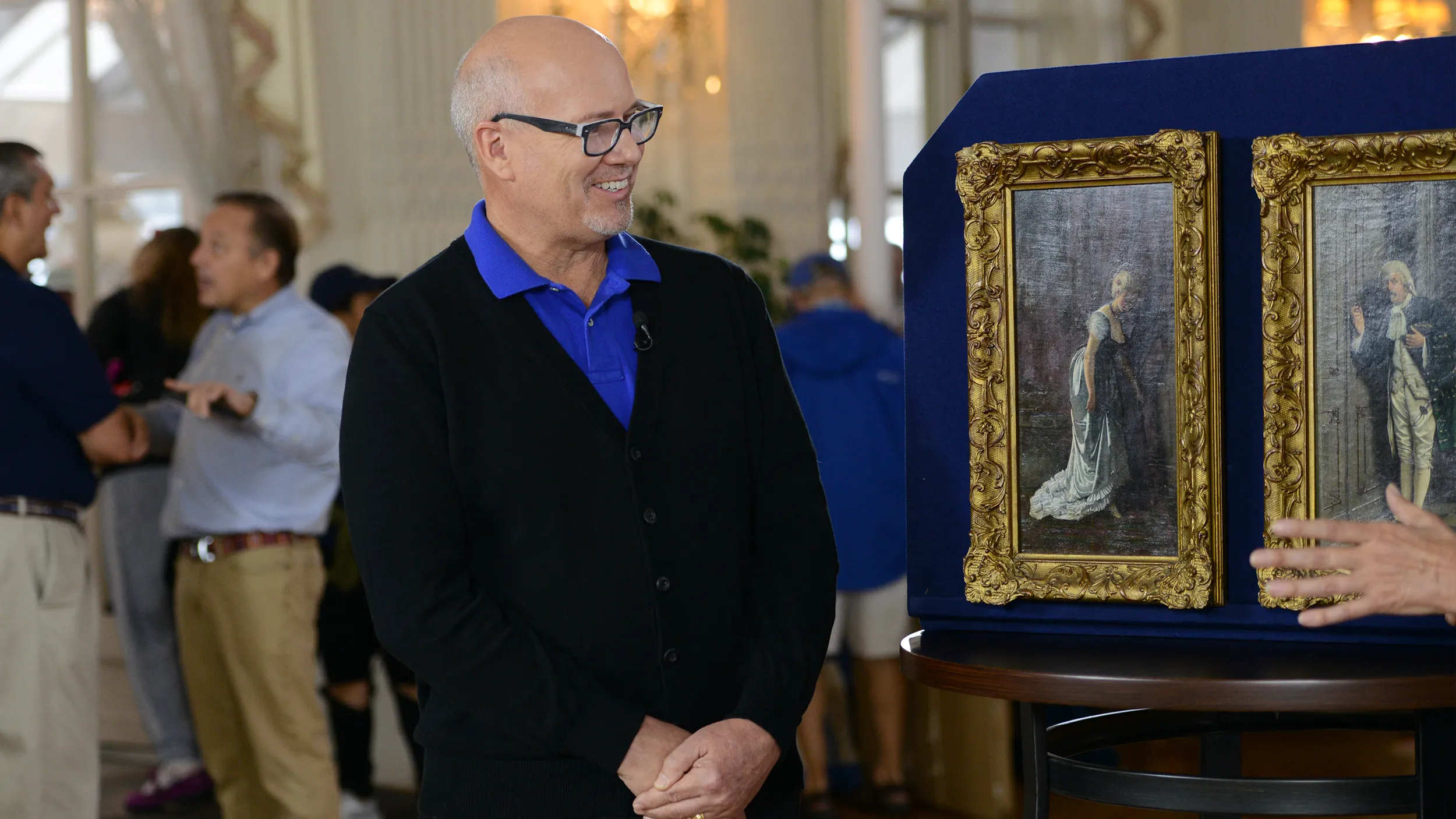GUEST: It's a snuff bottle. A gift from a friend. She bought it in the 1960s as a possible Fabergé piece.
APPRAISER: It's a stunning piece. It is a Fabergé piece. That's amazing. Fabergé was opened in 1842 by Gustav Fabergé. And then his son, at the age of 18, Carl, toured the world, came back to Russia and came into the business. And then Tsar Alexander III had them declared goldsmith by special appointment to the imperial crown, thus beginning the association with the Russian tsars. Also, Tsar Nicholas III commissioned the first Easter egg to be made in 1885. So what we have here is really a fabulous jadeite snuff bottle. The snuff bottle dates from the 18th century.
GUEST: Wow.
APPRAISER: And then Fabergé put this cap on top of it here, probably around 1890 to 1900, in that era.
GUEST: Okay.
APPRAISER: The cap is made out of 14-karat gold, which is a Russian standard. I looked at these little round cabochon stones. Do you know what kind of stones those are?
GUEST: They look a little bit like rubies to me.
APPRAISER: They are rubies, and they're the best kind-- they're Burmese rubies. They're Burma rubies all the way around there. It's capped on top with absolutely a fabulous cabochon garnet. Do you have a wild guess, if we had to put a value on it, what it could be worth?
GUEST: I really don't-- Fabergé. I wasn't even sure it was real, so...
APPRAISER: Oh, it is real. I'm very happy to tell you, retail, this is, easily would sell between $50,000 and $75,000.
GUEST: Oh, my gosh. That's fabulous.
APPRAISER: And it is a unique piece, it's not replaceable.
GUEST: No, no, absolutely not.
APPRAISER: It should be insured for $100,000. It's absolutely a fabulous piece.
GUEST: That's wonderful.
APPRAISER: It's museum-quality.












